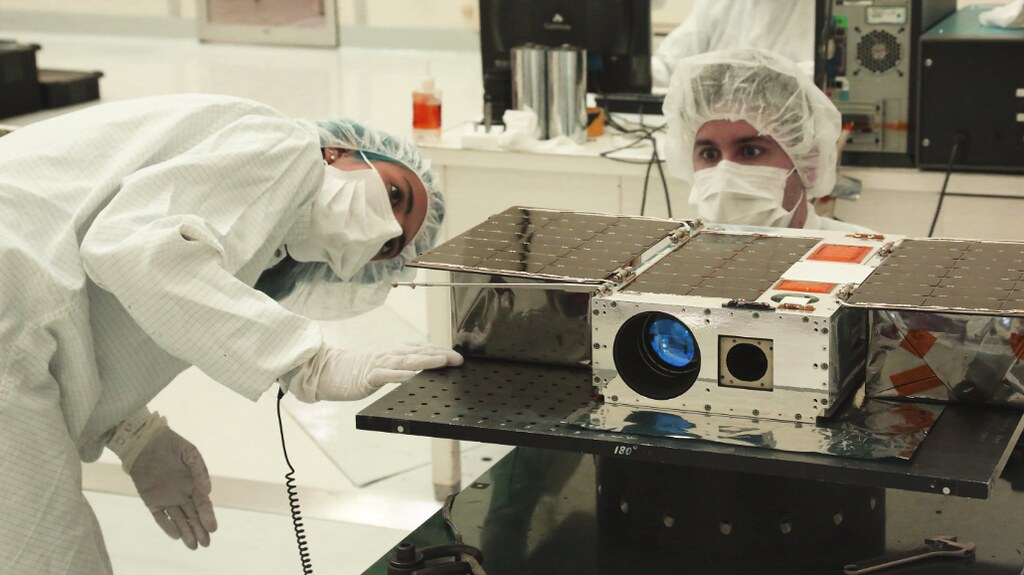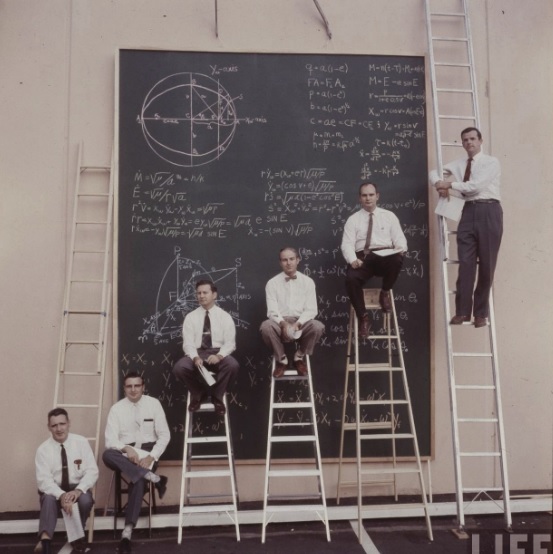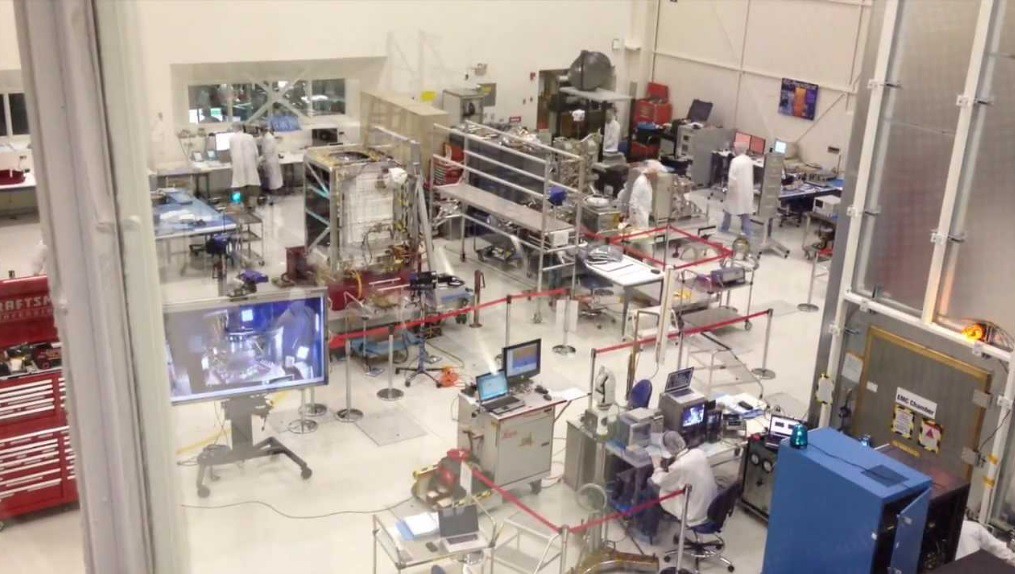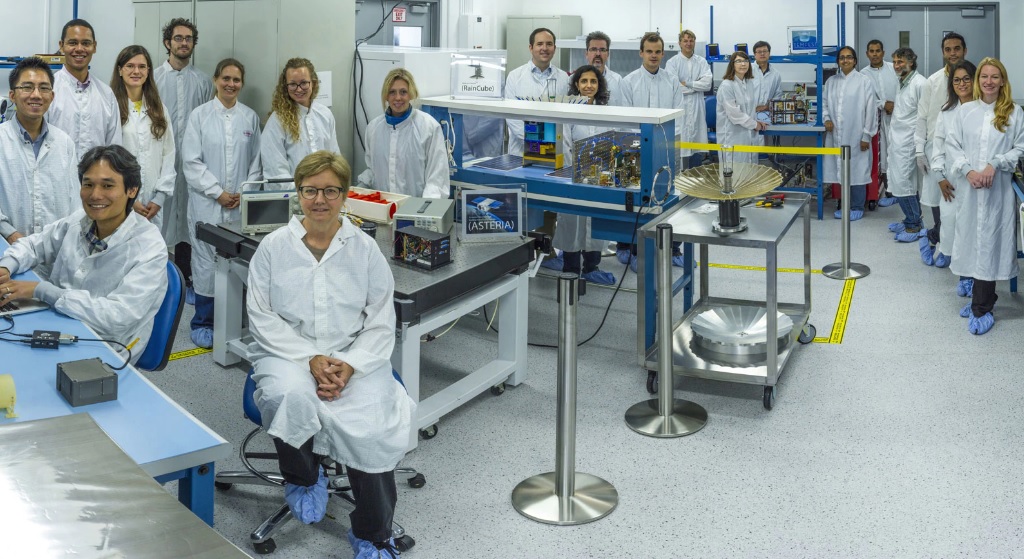Source: Phys.Org
Hollywood gives us a picture (one example) of a typical day in the life of a systems engineer at the Jet Propulsion Laboratory. What does that picture look like? An example might be shown below:
Source: RareHistoricPhotos.com
Now compare that with the written description from an interview of a true systems engineer at the Jet Propulsion Laboratory in Pasadena as highlighted on the 'Science & Entertainment Exchange' website shown below:
What is a typical day like for a systems engineer at JPL?The one thing I love about my job as a systems engineer is that there really is no such thing as a typical day. It changes dramatically over the lifecycle of a project, which goes like this. In the early phases of a project, the scientist community and NASA decide what it is that needs further study. Take Jupiter, for example. How was Jupiter really formed? Related to that question are things like: Does Jupiter have a core? How big is the core? What is the water vapor content of the atmosphere?Next, a call for proposals is sent out and engineers work with scientists to figure out how to go about finding the answers. Can we use a telescope on Earth? Or do we need to send a spacecraft all the way to Jupiter? Can it just fly by the planet or does it need to go into orbit? Then, we come up with a specific design for the spacecraft and instruments. For the instruments: they are often selected through a parallel proposal process. For the spacecraft side: if a spacecraft is going all the way to Jupiter, we work through big design questions like: Does it need nuclear power? Or can we use solar power? If we use solar power, how big would the arrays need to be? Over time, we mature the design to a very high level of detail, then build parts, and assemble them. There are many points throughout the design process for testing things, performing analyses, etc., to ensure everything is going to come together smoothly and perform the way we expect. Eventually, we launch the spacecraft. Once we are in this operations phase, we are getting the data back from the instruments, but also managing the health of the spacecraft.So far, I have worked on projects starting from the middle of the design phase through the final assembly, testing, launch, and operations phases. My job focuses a lot on troubleshooting and resolving design disconnects. For example, early in the design phase a telecom engineer might want 100 watts of power to make sure the signal back to Earth is very strong and easy to lock onto, but the power system may be providing only 500 watts for the entire spacecraft. The systems engineer’s job is to work with engineers from both of those areas (and the rest of the spacecraft too) to explore the trade space and figure out the best approach.
The description above implies the images below:
Source:JPL
Laboratories like the one above and below house teams of scientists who work collaboratively to think about all of the considerations for a given mission. A team which appears like the picture below:
Source: JPL/NASA
The laboratory above (spacecraft factory) is a result of years of work by NASA engineers. Over the course of decades, space scientists have worked to optimize (perfect) the process of design, construction, testing, and launching/mission. According to the description above by the systems engineer, a day can take on many different forms. Which highlights a very important observation which frequently arises when non-scientists visit laboratories. The scientific process has many components which range from constantly sourcing out funding for various research projects to solving unexpected problems encountered during research and development.
Conclusion...
The traditional (old image) of a scientist or systems engineer is one that is not only outdated but has changed over the last few decades. What image do I speak of? The image of men chalking up the boards with equations has been replaced largely by computational methods. A scientist working alone in his/her laboratory day after day has been replaced by a more collaborative working environment -- diverse with different genders, race, and ethnic backgrounds. Which spurs different angles of creativity and ideas in solving a project at hand. Since funding is getting more hard to find, more consideration into each part of the process from planning to finalizing construction of a spacecraft is considered in more detail. The result is a more diverse and inclusive interdisciplinary research and design group of scientists who are more concerned about living in a better world and beyond.
Related Blog Posts:
Why Chemistry Matters from the mouths of Nobel Laureates!
Scientists compare Misinformation In Mainstream News to a Viral Infection
What Is Going On Inside That Cell?
How Do Scientists Think?




No comments:
Post a Comment